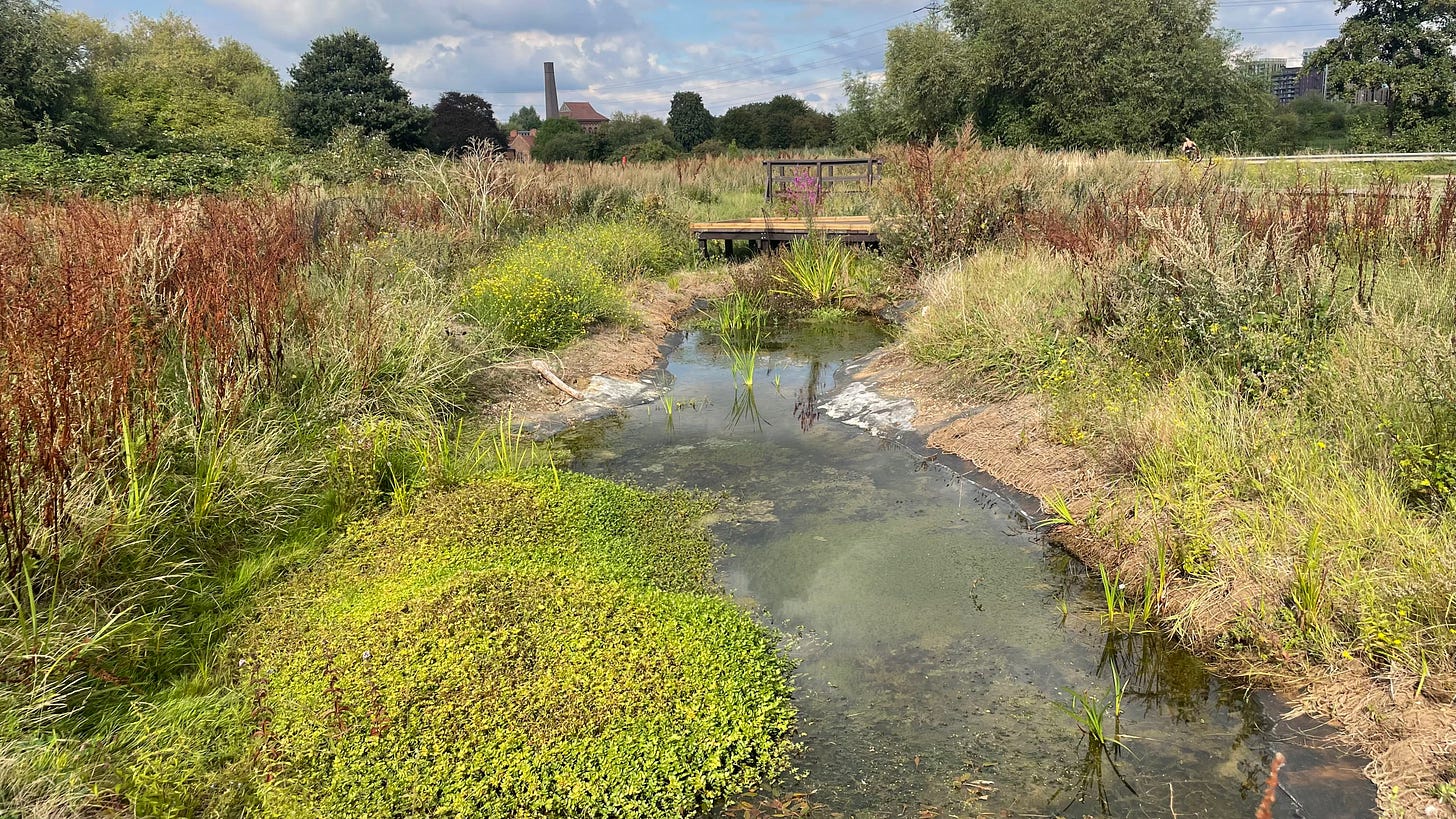In celebration of ponds
Building a pond is one of the best ways you can help local wildlife.
Pre-dawn. Misty. A quiet garden corner, somewhere in suburbia.
A fox pauses nearby, sniffing for a snack. It noses gently through a patch of long grass, finding water. A soft plop signals a frog disappearing beneath the surface. The fox drinks. Later, a blackbird will stand in the shallow end and pick a few insects for breakfast. As the world wakes, this hidden corner of the garden will remain a calming oasis for countless animals moving unseen through the town.
The humble pond is an unsung hero of urban nature.
Even a garden packed with a variety of plants, trees, pollinator-friendly flowers and long shady grass would struggle to attract the kind of biodiversity that a pond can. The smallest pond can be an incredible haven for wildlife, attracting pond-skaters, water snails, leeches, worms, water beetles, water boatmen, freshwater mussels, dragonflies, frogs, toads, newts, and in turn birds and mammals who feed and drink from the pond.
Frogs, toads and newts are particularly thankful in the presence of a good pond, as they rely on them to breed. Frogs often return to the place they were born every single year.
Ponds are naturally occurring ecosystems as geological shallows are flooded, rivers change course, and aquatic plant and animal life soon move in. But today, humans dredge and straighten rivers, drain bogs, and fill in ponds to make room for new urban development. The few ponds that remain are easily polluted with pesticides and artificial fertilisers.
So building a pond in your garden is one of the best things you can do to help local wildlife.
One of my favourite things about ponds is the lack of space required to make one. Just having water in your garden will be enough to attract water-loving insects and the animals that feed on them, so simply placing a secure container like a washing up bowl or an old ceramic sink and filling it with water would do wonders.
But if you’re making a pond and want to go the extra mile, you can turn a nice-to-have into a super ecosystem. Here’s a handful of hot tips:
Slope one side gently. This gives mammals like hedgehogs an escape route if they fall in.
Keep one end deeper, at least 60 centimetres. This stops it completely freezing in the winter, so life can still carry on carrying on in the deepest part.
Plant bushes around the edge. A bit of shade for when the summer heats up, as well as protection from prying birds of prey that might be after the frogs.
Autumn is the best time to build a pond so it can settle in plenty of time before the next breeding season starts. So what are you waiting for? Get digging.
If you want to go the extra mile to help out our amphibious friends, consider supporting the wonderful work of Froglife.
And as always, if you are enjoying this free newsletter, please share it and help others get back in touch with the nature on their doorstep.
Sources





